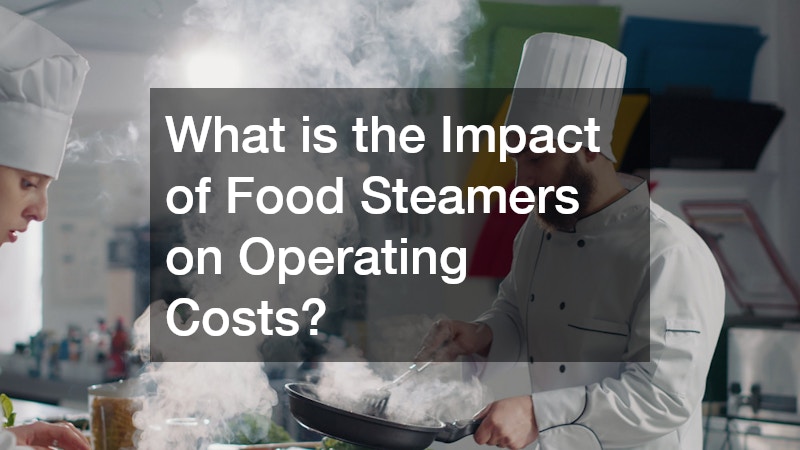
City restaurants are constantly exploring innovative ways to improve efficiency and food quality. The use of a commercial food steamer has become integral to many kitchens, revolutionizing how dishes are prepared and served.
Why Do City Restaurants Prefer Food Steamers?
Efficiency and Speed
Commercial steamers play a crucial role in rapidly cooking large quantities of food, making them a perfect fit for high-volume restaurant settings. This speed allows chefs to cater to more customers in less time, thereby increasing turnover and profitability.
The ability to produce consistent results quickly is a major advantage in fast-paced restaurant environments. This efficiency does not compromise food quality, making it a preferred method for many chefs.
Many restaurants benefit from reduced preparation times as steamers can cook multiple dishes simultaneously. This capability ensures that diners receive their meals quickly, improving customer satisfaction and retention.
Healthier Cooking Options
Steaming is known to better preserve nutrients in food compared to other cooking methods, which is a key consideration for health-conscious diners. This method avoids the use of additional oils and fats, resulting in healthier, low-calorie meals.
Customers looking for nutritious options often gravitate towards steamed meals, appreciating their natural taste and health benefits. Furthermore, chefs can highlight their commitment to health and wellness by offering these options on their menus.
Restaurants that prioritize health-oriented menu items find steamers indispensable, as these appliances align with broader trends toward healthier eating habits. This trend not only attracts more customers but also reinforces the restaurant’s brand image as a health-conscious establishment.
What Types of Food Steamers Are Most Popular?
Convection Steamers
Convection steamers are celebrated for their efficiency in evenly cooking a wide array of foods with consistency. They circulate heat and moisture evenly, preventing hotspots or overcooked areas on dishes.
These steamers are versatile, suitable for everything from vegetables to delicate seafood, meeting diverse menu requirements. Restaurants like using them because they are adaptable to different culinary styles and preferences.
Using convection technology, these steamers maintain precise temperature controls, which is crucial for executing complex recipes. They ensure that each dish matches the chef’s exacting standards and the diner’s expectations.
Pressure Steamers
Pressure steamers are often preferred for their ability to cook food faster, an essential feature in busy kitchen environments. Their use of high-pressure steam penetrates food quickly, reducing cooking times dramatically.
These steamers are particularly effective during peak hours when speed is of the essence to meet customer demand promptly. The ability to deliver high-quality meals swiftly influences a restaurant’s reputation and service quality.
Although they cook faster, pressure steamers still retain food’s nutritional value and flavors, maintaining a balance between speed and quality. Restaurants rely on them to manage busy periods without sacrificing the integrity of their dishes.
How Does Steaming Enhance Food Flavor and Texture?
Moisture Retention
Steaming naturally retains moisture within foods, preventing dishes from drying out and ensuring they remain juicy and flavorful. This is especially important for proteins like chicken and fish, where texture can significantly affect the dining experience.
Retaining moisture also contributes to a dish’s presentation, making it more appealing visually as well as palatably. Diners appreciate meals that look as good as they taste, enhancing overall satisfaction.
Moreover, the preparation affects not only the flavor but also the nutritional aspect of the dish, helping retain vitamins and minerals that might otherwise be lost. This method caters to increasing consumer demands for both taste and health benefits in their meals.
Intensified Natural Flavors
Steaming intensifies and preserves the natural flavors of ingredients, offering a purer taste experience compared to other cooking methods. Without needing additional fats or intense seasonings, the original taste of food is maintained and highlighted.
This method allows chefs to showcase their ingredients’ quality, as the true flavors are unmasked and unaltered by unnecessary additives. Many diners prefer this authentic taste, which emphasizes the chef’s skill and ingredient sourcing.
Additionally, by enhancing natural flavors, steamers help reduce the dependency on salt and artificial flavorings, aligning with the trends towards less-processed, cleaner eating habits. This aligns with consumer preferences for genuine, ingredient-first dishes.
What is the Impact of Food Steamers on Operating Costs?
Energy Efficiency
Modern steamers are designed to conserve energy, effectively lowering utility bills for restaurant operations. This reduction in energy use directly impacts a restaurant’s bottom line, providing financial sustainability benefits.
Utilizing steamers aligns with eco-friendly practices, which appeal to environmentally-conscious customers. Restaurants committed to sustainability can turn energy savings into marketing advantages.
Enhanced energy efficiency also extends the longevity of the steamer, maximizing the return on investment for restaurant operators. This ensures that businesses get more value from their equipment while maintaining quality service.
Long-term Savings
Commercial steamers are built for durability, minimizing the need for frequent replacements and repairs. This reliability means restaurants can save on equipment costs in the long run, reallocating funds to other areas of the business.
The lower maintenance needs associated with steamers translate into fewer disruptions in kitchen operations, thereby enhancing productivity. The steady function of these appliances is crucial for planning menus and service delivery efficiently.
This advantage plays a significant role in budget forecasting, allowing restaurants to allocate finances more strategically. Long-term savings strengthen the financial health and stability of restaurant businesses, promoting growth and development.


